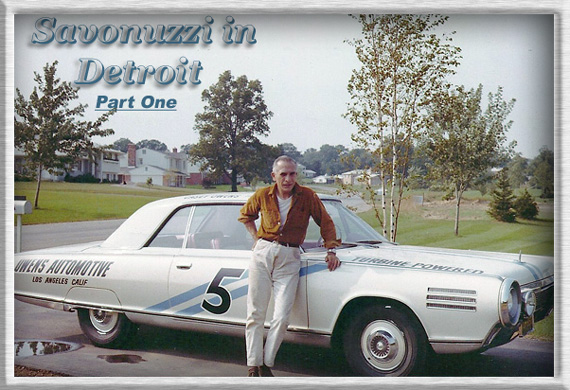
1964: Giovanni Savonuzzi with the only Chrysler Turbine Car not painted bronze. The car was prepared for use in the movie “The Lively Set” starring James Darren and Pamela Tiffin. The photo was taken at his home in Franklin, Michigan. Photo courtesy Alberta Savonuzzi.
A Memoir by Robert F. Pauley
For over 25 years I worked in Chrysler’s Research Design Department and spent many years on the gas turbine program. I started at Chrysler in June 1953 as a chassis-engine designer and later was promoted to Design Supervisor for powerplant research. What follows are some remembrances of the time I spent on the Chrysler turbine program with the Italian engineer and designer Giovanni Savonuzzi. Initially we worked on the third floor of the Engineering Building in Chrysler’s Headquarters in Highland Park, a suburb of Detroit In June 1956 the entire turbine engineering group was transferred to a leased building on Greenfield Road in Detroit about eight miles from Highland Park. The building was devoted to the gas turbine program. It was there that my short but memorable relationship with Savonuzzi took place.
Meeting Savonuzzi
I first met Savonuzzi under rather unusual circumstances. It was in the summer of 1958 and at the time I was working in the Greenfield Road Plant. One day my boss called me into his office and said that he had an assignment for me but that I was not to tell anyone about it. He said that there was an Italian engineer named Savonuzzi in Highland Park who needed some drafting/design work done and that I should go there and see what he wanted. “Wow,” I said, “…you mean THE Giovanni Savonuzzi?” John was taken aback and asked “How do you know about him – they told me it was a secret?” John was not a “car guy” so I had to explain to him that I had read all about Mr. Savonuzzi’s car designs and accomplishments in Road & Track magazine and other car publications. John said “I never heard of him.” And that ended the conversation.
I drove to Highland Park with great anticipation and went up to the sixth floor of the Engineering Building as instructed. At that time the sixth floor was not being used and the corridors were empty. I found the unmarked door and entered into what appeared to have been the waiting room for some big-shot executive many years ago before World War II. The receptionist appeared to have no other job except to guard the door behind her, but when I told her who I was she stepped aside and announced that “Mr. Pauley is here.” The inner room was quite large with dark mahogany walls. There was a small desk, a couple of chairs and a drawing board covered with drawings and styling sketches but not much else. In the middle of the room was a work platform with a large clay model of an exciting-looking car on top of the pedestal.
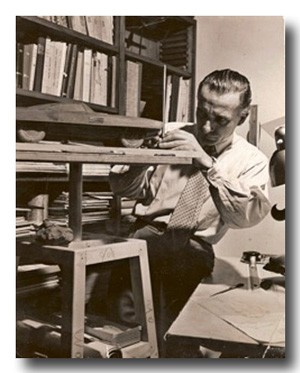
Savonuzzi some years earlier at Ghia, working on a clay model. He brought his skills, genius and habits to the very foreign land of Detroit.
Savonuzzi was dressed in a blue artist’s smock and working in deep concentration on the clay model. He spun around, shook my hand with his clay-covered hand and said “Let’s sit down and talk.” And talk we did…for several hours. The first thing he said to me was that no one must know that he was here! He didn’t have to explain because I knew immediately why. Here was a high level company executive working on a clay model, and the Chrysler clay modelers were a very tight knit and vocal union group. If they knew that a non-union individual, and a top level executive at that, was working on a clay model they would have gone on strike within an hour! Savonuzzi was treading on dangerous territory and I think he knew it. Furthermore, he was making mechanical drawings on a drawing board… another no- no. All of Chrysler’s draftsmen and designers were union members and they would have joined those clay modelers on the picket line if they knew what he was doing in that room! It sure looked like a dangerous and risky situation to me, especially if the union found out.
So we sat down and talked. I told Savonuzzi that in 1951 I had attended the Museum of Modern Art (MOMA) exhibition in New York City to see the Cisitalia that he had designed and which was the star of the show. My comment brought a huge smile to Savonuzzi’s face and right away we were friends.
I suspect that many of the people he encountered at Chrysler had never heard of or didn’t even know what a Cisitalia was, which must have been a bit frustrating for him. We also talked about the Gilda which I had read about in auto magazines and I could see that that car was his pride and joy. He had a small photo album in his desk and got it out to show me some of his better-known car designs. One photo really caught my eye. It showed a young Savonuzzi as an engineering student at Fiat, standing alongside a pair of tandem coupled Fiat V-12 engines on a test stand. As a long-time air racing enthusiast I knew immediately what that engine was. I said to him, “I didn’t know you worked on the Fiat engine that powered the Macchi-Castoldi MC-72 Schneider Cup racer that established a world speed record of 440 mph back in 1934!” But he did and was very proud to have worked on that engine that brought honor to Italy.
After I had identified that engine we suddenly became even better friends. I spent several very enjoyable hours just listening to Savonuzzi talk about racing cars, the Mille Miglia, Italy, Ghia and life in general, but not once did he ever mention why he had asked for me to come and visit him. Soon it was time to go and I asked him if there was anything he wanted me to work on, but he just said that he would get back to me when that time came.
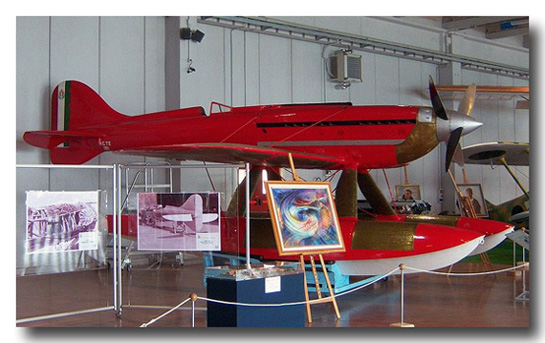
The Macchi-Castoldi MC-72 set a new world speed record (over water) on 10 April 1933, with a speed of 682 km/h (424 mph), piloted by Francesco Agello. Not satisfied, on 23 October 1934, Agello piloted the plane for an average speed of 709 km/h (440 mph).
It was several years before our paths crossed again. I suspect (and this is pure speculation) that someone in upper level management realized that Savonuzzi was in a situation that could have resulted in serious union problems and that they put an end to Savonuzzi’s private styling and design studio.
In the meantime at Chrysler, things were moving forward on the turbine program. George Huebner was Director of Chrysler’s Research Division and had been in charge of the gas turbine program since its inception. When I started at Chrysler Mr. Huebner would make occasional visits to our design department to review work that was in progress. He would visit me, and other designers in our department, to review our design work, but always had the department manager along who usually did all the explaining as to what we were working on. Huebner always seemed a bit aloof and haughty and occasionally would say “Hello” and “Thank you” to me, but not very often!
Quite some time later, an announcement was issued stating that Savonuzzi had been named Chief Engineer of all of the Research Departments. That was in 1962 and would have included the Greenfield Engineering Operation as well as the Laboratory and the Metallurgy, Physics and Chemical Departments that were all part of Research but were still located back in Highland Park.
After Savonuzzi had assumed leadership over the Greenfield Road Engineering Department we saw Huebner a few more times, usually accompanied by Savonuzzi, and I remember that at least one time the two of them toured the drafting area. That was the first time I had seen Savonuzzi since that first meeting in Highland Park. We rarely saw Huebner after that but saw a lot more of Savonuzzi.
One day Giovanni came over to my drawing board and said he had a new project he wanted me to start working on; an Indianapolis race car! This was unbelievable! Now I realized that he was a true Italian after all – the first thing on his mind was a race car!
I couldn’t believe he’d attempt this, but he did.
Part 2: Chrysler Indy, vertical drafting boards and a letter to Enzo.
Want to know more?
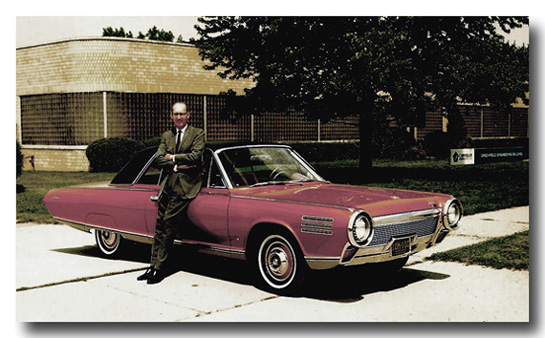
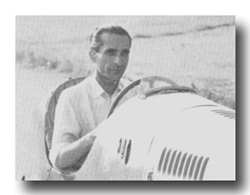
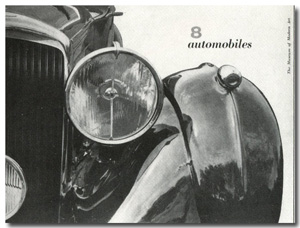
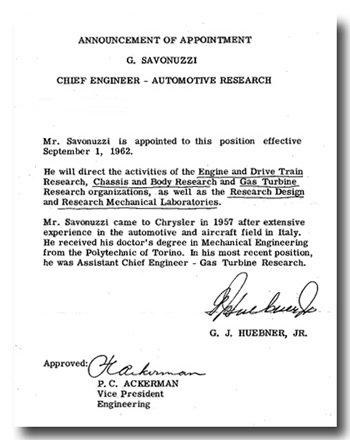
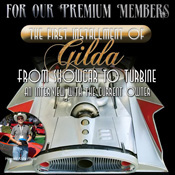
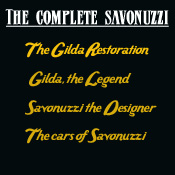

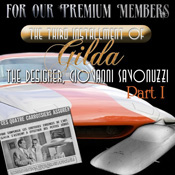
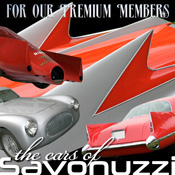
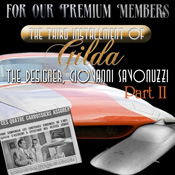
I remember that movie–I was surprised to see Ghia turbine cars being thrashed
along a dirt road. I wonder if they were all turbine powered or some were just body shells on regular piston engine cars? It was the usual plot of indepdnent car builder has dream car; gets big automaker to back him;yadda-yadda, like Carroll Shelby did in real life. When my neighbor Lou Bettega, who hired Chrysler engineers, told me he was working with savonuzzi, I was too dumb to know what a treat that must have been….but I did drive the turbine car, I think I remember the tach reading up above 20,000 rpm!
Mr. Wyss,
The white Chrysler Turbine Car that appeared in the movie “The Lively Set” was powered by a Chrysler Research designed A-831 gas turbine engine and had a Ghia-built body. The driver in all of the scenes where the car is seen in action was George Stecher, one of the many talented technicians who worked in the Research Department. I was hired by Lou Bettega in June 1953, And the maximum speed of the compressor shaft was 44,610 rpm!
Bob Pauley
Anybody else remember an article in an old Road and Track about a midget that Savonuzzi designed?
Wonderful Savonuzzi stories. Looking forward to Part 2.
We’ll address that very briefly with in Part II along with an original sketch of the midget by Savonuzzi.
[Ed.]
Outstanding! Savonuzzi is beginning to get some credit for his many talents.
Winston Goodfellow just finished an article for Motor Trend Classic on Gilda that will shed a bit more light on the subject. Also, Gilda will be the center piece of an exhibit, “Aerodynamics: from Art to Science”, at the Petersen Museum that will run from June 2012 to May 2013. After that she is going to the High Museum of Art in Atlanta to be part of “Spark” an exhibition featuring Dream Cars that is being curated by Ken Gross.
I was a ‘Body Art Designer’ in the Interior Design Studio, where the Turbine Car interior was created. The Studio Manager was Chuck Mitchell. Joe Hess created a full size clay model of the interior which was sent to Italy where the interiors were created for all of the Turbine Cars. It was a fun period of my career (from 1954 to 1988). My assignments covered Show Cars like the Chrysler 300X, Research vehicles (Chrysler/G.E. electric car program), Full size vans, Prototype Models, Rear Engine Sport car named the Intrepid, you name it and I was probably lucky enough to have worked on [it]. My hero in those days was Jack Withrow. I have hundreds of stories from thoughout my career at Chrysler.
Yes George Stecher did the driving scenes for Darren’s character Casey Owens. These scenes were originally driven by my father (Dave MacDonald) but after his death in the ’64 Indy 500 George was called in to reshoot them. Citing sensitivity concerns Universal also removed all but one of my father’s speaking parts in the movie